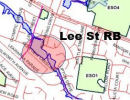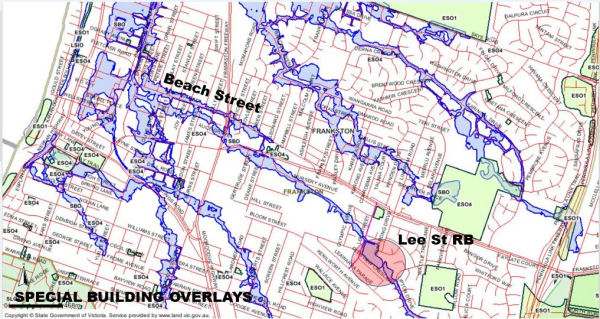
 Alan Hood is a Flood Researcher. Melbourne Water owns this Retarding Basin and their maintenance contractor, John Holland - KBR Joint Venture intend removing trees and various works in "late January" - any day now. This could be an attempt to cater for increased suburban stormwater runoff without increasing the capacity of the chain of retarding basins. Although prepared for dams which would normally be at least 10 to 15 m high, ANCOLD guidelines can also be used to assist with decisions on smaller dams, particularly where such dams create potential loss of life or significant damage. The attached Planning map shows Special Building Overlays (SBO) for Frankston; the identify areas likely to be flooded. If the Lee St Retarding Basin batters are at least 10 to 15 metres high, there might be some justification for removing the trees, but see more inside this article. [Introduction written by candobetter.net editor.]
Alan Hood is a Flood Researcher. Melbourne Water owns this Retarding Basin and their maintenance contractor, John Holland - KBR Joint Venture intend removing trees and various works in "late January" - any day now. This could be an attempt to cater for increased suburban stormwater runoff without increasing the capacity of the chain of retarding basins. Although prepared for dams which would normally be at least 10 to 15 m high, ANCOLD guidelines can also be used to assist with decisions on smaller dams, particularly where such dams create potential loss of life or significant damage. The attached Planning map shows Special Building Overlays (SBO) for Frankston; the identify areas likely to be flooded. If the Lee St Retarding Basin batters are at least 10 to 15 metres high, there might be some justification for removing the trees, but see more inside this article. [Introduction written by candobetter.net editor.]
Melbourne Water owns this Retarding Basin, and their maintenance contractor John Holland – KBR Joint Venture intend removing trees and various works in “late January” – any day now.
The trees around this Retarding Basin are a critical Koala corridor, and other native species live in and use them.
So, there is a conflict but the advice from John Holland and Melbourne Water appears to be too little, too late; the last community information session took place on January 22.
John Holland are using ANCOLD guidelines for removing these trees www.ancold.org.au
 The Australian National Committee on Large Dams says: “ANCOLD guidelines are applicable for water or tailings dams with potential to cause loss of life or significant environmental or physical damage through operation or failure.
The Australian National Committee on Large Dams says: “ANCOLD guidelines are applicable for water or tailings dams with potential to cause loss of life or significant environmental or physical damage through operation or failure.
Although prepared for dams which would normally be at least 10 to 15 m high, ANCOLD guidelines can also be used to assist with decisions on smaller dams, particularly where a dam or series of dams creates potential loss of life or significant damage.
A Retarding Basin is not a permanent dam; it is one of the riskier methods of flood control, which seems to have become popular in Melbourne. In theory, when there is a heavy rainfall event, water rushes into the uphill end of the dam, and a small outlet at the lower end allows a much smaller amount of water to flow out. During this process the water level in the basin rises, and the hope is that the stormwater flow will stop before the basin overflows and send water cascading down the valley at full strength anyway.
If the Lee St Retarding Basin batters are at least 10 to 15 metres high, there might be some justification for removing the trees, however:
- Certain types of tree roots can bind certain types of soil
- If a retarding basin further up the chain overflows, the whole chain goes down like a pack of cards
- action looks like an attempt to cater for increased suburban stormwater runoff without increasing the capacity of the chain of retarding basins.
- It also looks like an opportunity for a grass only site to reduce the cost of maintenance
- An alternative corridor for the Koalas needs to be found, perhaps by delaying the removal of Koala-critical trees.
Unless John Holland – KBR Joint Venture has carried out engineering calculations for each of the retarding basins in the chain, and found deficiencies, and has addressed the points outlined above, they haven’t really addressed the safety issue or the wildlife issue.
Simply quoting the ANCOLD guidelines, which are for bigger, permanent, dams is not an excuse to avoid engineering calculations.
Attachment S4235
This Planning map shows Special Building Overlays (SBO) for Frankston; the identify areas likely to be flooded.

Add comment